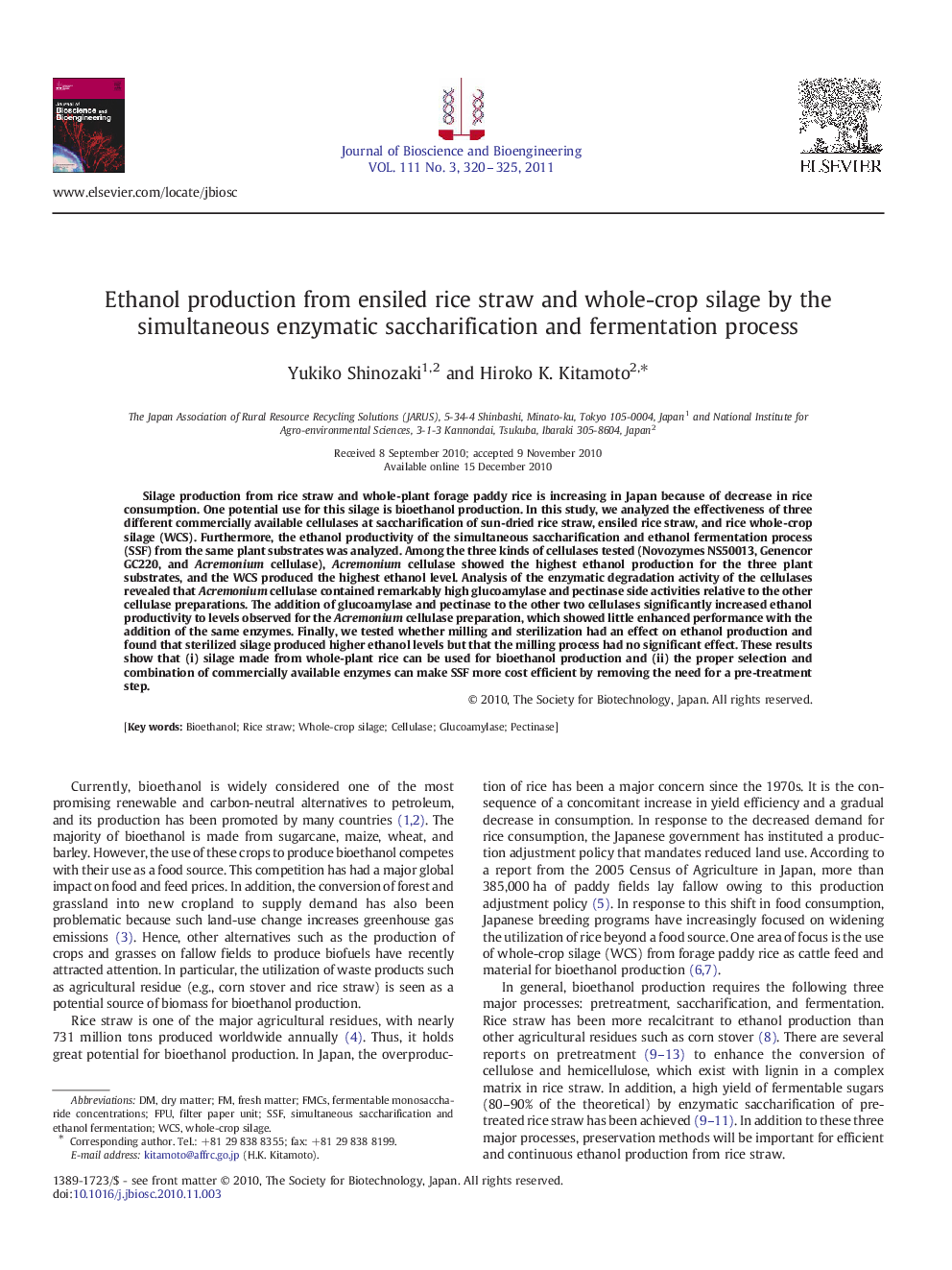| Article ID | Journal | Published Year | Pages | File Type |
|---|---|---|---|---|
| 21486 | Journal of Bioscience and Bioengineering | 2011 | 6 Pages |
Silage production from rice straw and whole-plant forage paddy rice is increasing in Japan because of decrease in rice consumption. One potential use for this silage is bioethanol production. In this study, we analyzed the effectiveness of three different commercially available cellulases at saccharification of sun-dried rice straw, ensiled rice straw, and rice whole-crop silage (WCS). Furthermore, the ethanol productivity of the simultaneous saccharification and ethanol fermentation process (SSF) from the same plant substrates was analyzed. Among the three kinds of cellulases tested (Novozymes NS50013, Genencor GC220, and Acremonium cellulase), Acremonium cellulase showed the highest ethanol production for the three plant substrates, and the WCS produced the highest ethanol level. Analysis of the enzymatic degradation activity of the cellulases revealed that Acremonium cellulase contained remarkably high glucoamylase and pectinase side activities relative to the other cellulase preparations. The addition of glucoamylase and pectinase to the other two cellulases significantly increased ethanol productivity to levels observed for the Acremonium cellulase preparation, which showed little enhanced performance with the addition of the same enzymes. Finally, we tested whether milling and sterilization had an effect on ethanol production and found that sterilized silage produced higher ethanol levels but that the milling process had no significant effect. These results show that (i) silage made from whole-plant rice can be used for bioethanol production and (ii) the proper selection and combination of commercially available enzymes can make SSF more cost efficient by removing the need for a pre-treatment step.
